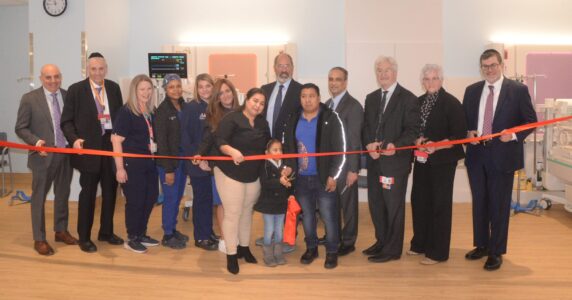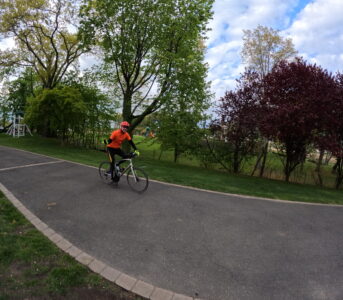Power up!
Fun and games are being used to bring patients back to health at NYU Langone Hospital – Brooklyn.
The Sunset Park-based facility is taking rehabilitation to the next step with its new gamification programs that are used to rehabilitate post-stroke patients, including some interactive fitness devices that test balance.
NYU Langone and the Department of Neurology and Rehabilitation are using the video game-esque programs to help rehab patients 18 and over in an intuitive and fun way that leaves patients feeling accomplished.
Vice President of Neurology and Rehabilitation for NYU Langone Hospital–Brooklyn Vincent Cavallaro talked to this paper about the program.
“Part of rehabilitation prior to this had to do with repetitive task training,” he said.
“Then we had the opportunity to get the patients more engaged in their therapy process. For patients who had limited motion in either their arm or leg, there was a device able to supplement some of the range of motion to allow movement to occur so that the patient actually relearns the movement.”
After the hospital became a joint commissioned accredited stroke site, Cavallaro and company realized that they wanted to enhance the treatment for patients.
“We have this BIT (Bioness Integrated Therapy) system, which is really like a gaming board that patients use to improve their cognitive skills as well as their balance performance,” he said.
The following year, the hospital purchased a Korebalance system which has a computer screen similar to what one might see in a gym that makes the therapy more interactive.
“As you see in more exercise equipment today, you become part of the environment that you’re working in or exercising in so it’s reproduced at a lower level for patients with disabilities,” Cavallaro said. “There’s greater buy-in from the patients because they’re competing against themselves and the machine and they’re trying to stay on course. And, by staying on course, essentially they’re learning to restore some of the function that they lost.”
According to the National Stroke Association, 10 percent of people who have had a stroke recover almost completely, with 25 percent recovering with minor impairments.
Thanks to these devices, patients in a wide age range were able to use virtual reality to aid in their recovery, relearning skills lost due to the stroke.
Cavallaro cited a program on the KoreBalance that utilizes a ski slope, with patients required to stay on the trail, avoiding trees and flags.“You are represented, in this particular game, by a penguin,” he said. “Patients stand on a platform and just minor changes in weight-bearing status or minor changes in balance allow the penguin to shift right or left. When you think about walking or standing, these minor changes in your balance enable you to stay erect, so that reinforces your balance retraining and allows you to walk more safely than if I were to teach you how to sit, stand from a mat, pick up one leg, pick up the other leg.”
The reception has been positive once patients get used to the regimen.
“With KoreBalance, patients are a little nervous at first but a therapist is usually on the device with them, not standing on the balance board, but standing behind them,” he said. “Once they get the feel of a little success on that trail, each day they kind of look forward to it.”
As far as the BIT machine, patients play against themselves but aim for a higher score. By doing that, Cavallaro said, they are able able to measure their cognitive changes from when they were admitted to discharge.
The machine, Cavallaro said, provides evidence, “To show that because of that training, they are getting better. The same thing with the ambulation status — we can measure what level they came in at and how their ambulation has improved,” Cavallaro said.
Other systems used at the hospital include the Armeo Spring and the Flint Rehab Glove
Going forward, Cavallaro said, the hospital is looking to acquire additional machines that can enhance therapy, such as “a treadmill that the patient walks along, maybe the base varies a bit, and the patient has to keep up with a trail or a path or some other course to keep them engaged, “ he said. These, he added, take “partial weight bearing devices” a step further, making the activity “much more purposeful. They’ll have their body weight supported so they can focus not on the bike buckling or falling but on the actual ambulation and key training.”

 Maimonides expands its Neonatal Intensive Care Unit
Maimonides expands its Neonatal Intensive Care Unit  May her memory be a blessing
May her memory be a blessing